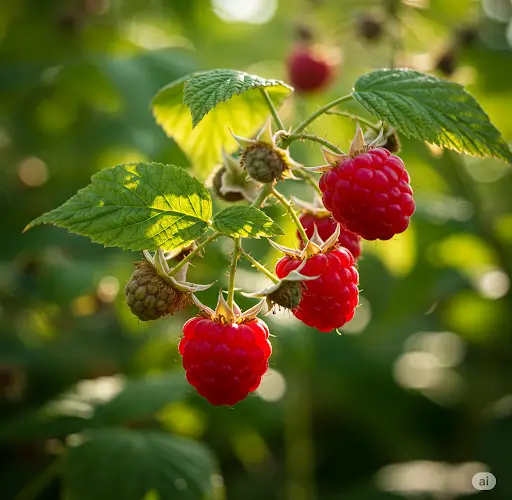Raspberries are a delicious and rewarding fruit crop, but to truly enjoy a bountiful harvest, proper spring pruning is essential. Pruning may seem intimidating to beginners, but it’s one of the most important steps for maintaining healthy canes, improving air circulation, and stimulating productive fruiting. This guide will walk you through the best techniques for pruning raspberries in the spring to ensure a season full of juicy, sweet berries.
Understand Your Raspberry Type: Summer vs. Fall Bearers
Before you make your first cut, it’s crucial to know what type of raspberries you are growing:
-
Summer-bearing raspberries produce fruit once a year, typically in early to mid-summer, on canes that grew the previous season (called floricanes).
-
Fall-bearing raspberries (also called everbearing) produce fruit on the current season’s growth (primocanes), usually in late summer and fall. Some varieties can also produce a small crop on last year’s canes in early summer.
The pruning technique differs depending on the variety, so proper identification helps avoid removing the wrong canes and reducing your harvest.
Why Spring Pruning Is Critical
Spring pruning serves several important purposes:
-
Removes dead or weak canes that no longer produce fruit.
-
Improves airflow and light penetration, reducing the risk of diseases such as cane blight and powdery mildew.
-
Encourages new growth that will bear more fruit.
-
Prevents overcrowding, which leads to better berry size and easier harvesting.
With just a few tools and a bit of time, your raspberry patch can be transformed into a more productive and manageable planting.
What You’ll Need
Before you begin, gather the following tools:
-
Sharp garden pruners or loppers
-
Garden gloves (raspberry canes are thorny!)
-
A bucket or tarp to collect pruned debris
-
Optional: rubbing alcohol to sterilize pruners between plants
Sterilizing your tools helps prevent the spread of disease, especially when working with older or damaged canes.
Pruning Summer-Bearing Raspberries
In early spring, before the plants leaf out but after the worst of winter has passed, it’s time to prune summer-bearing raspberries. Follow these steps:
-
Identify dead canes. These are typically gray, brittle, and dry. Remove them completely at ground level.
-
Locate last year’s fruiting canes (floricanes). These canes often have peeling bark and remnants of fruit clusters. Cut them out at the base—they won’t produce again.
-
Thin healthy canes. Choose the strongest, tallest green canes (primocanes) from the previous year to retain. Aim to leave about 4–6 canes per foot of row.
-
Trim the tops. If the tops are damaged or excessively tall, cut them back to about 4–5 feet to encourage branching and better fruiting.
This process gives the plant room to focus its energy on producing large, healthy berries.
Pruning Fall-Bearing Raspberries
Fall-bearing raspberries can be pruned in two ways, depending on whether you want one large fall harvest or a smaller summer harvest followed by a fall crop.
Option 1: One Large Fall Crop
-
Cut all canes to the ground in early spring before new growth begins.
-
This encourages new canes that will fruit later in the same season.
Option 2: Two Crops (Summer + Fall)
-
In early spring, remove only the dead tips of the canes that fruited the previous fall.
-
These canes will produce a small summer crop.
-
After the summer harvest, cut those canes to the ground to allow space for new growth, which will fruit in the fall.
Most gardeners prefer the first option for simplicity and higher yield.
Additional Tips for a Better Harvest
-
Mulch generously around your raspberry plants after pruning. This helps retain moisture, suppress weeds, and insulate roots.
-
Support canes with a trellis system or stakes to prevent breakage and make harvesting easier.
-
Feed plants with compost or a balanced fertilizer after pruning to support vigorous new growth.
-
Monitor for pests like raspberry cane borers or diseases throughout the season and remove affected canes promptly.
Final Thoughts
Proper spring pruning is one of the simplest yet most effective ways to boost raspberry production. By removing old, weak, or overcrowded canes and encouraging fresh growth, you not only improve the health of your raspberry patch but also ensure a season filled with juicy, delicious berries.
Whether you’re growing a few canes in your backyard or managing a larger patch, these pruning techniques will help you get the most out of your efforts. With a little time and attention each spring, your raspberry harvest will be bigger, sweeter, and more enjoyable than ever.



